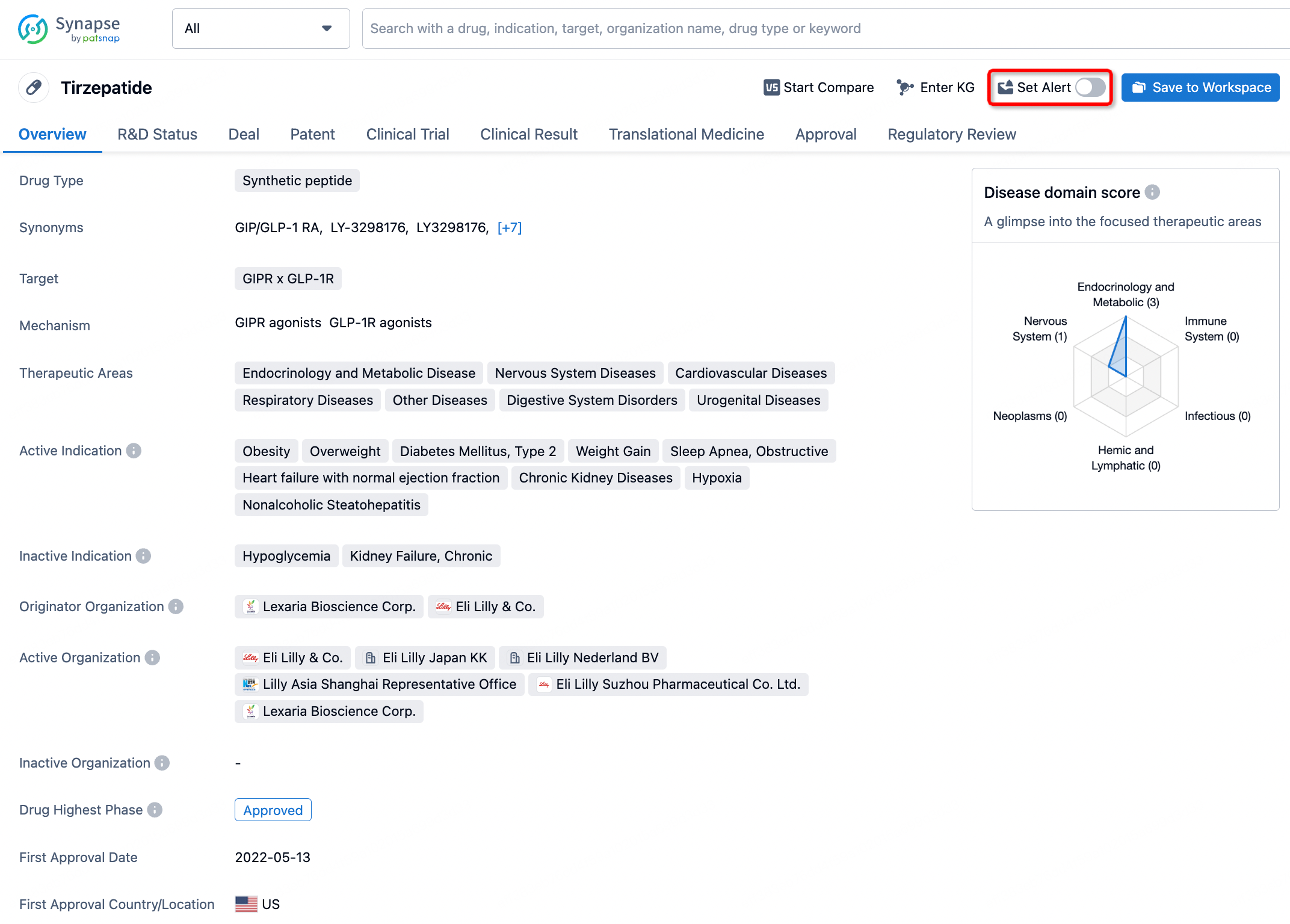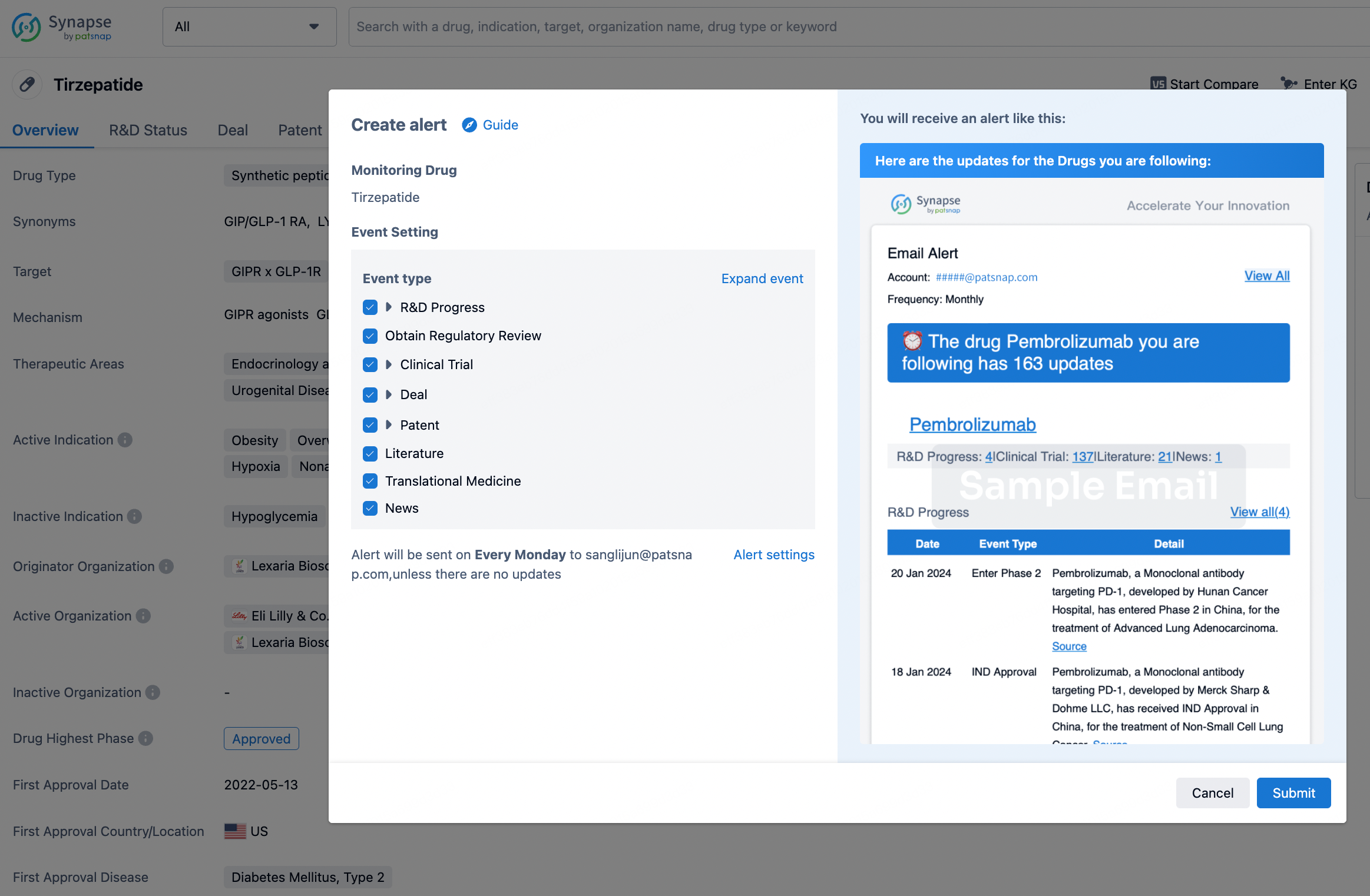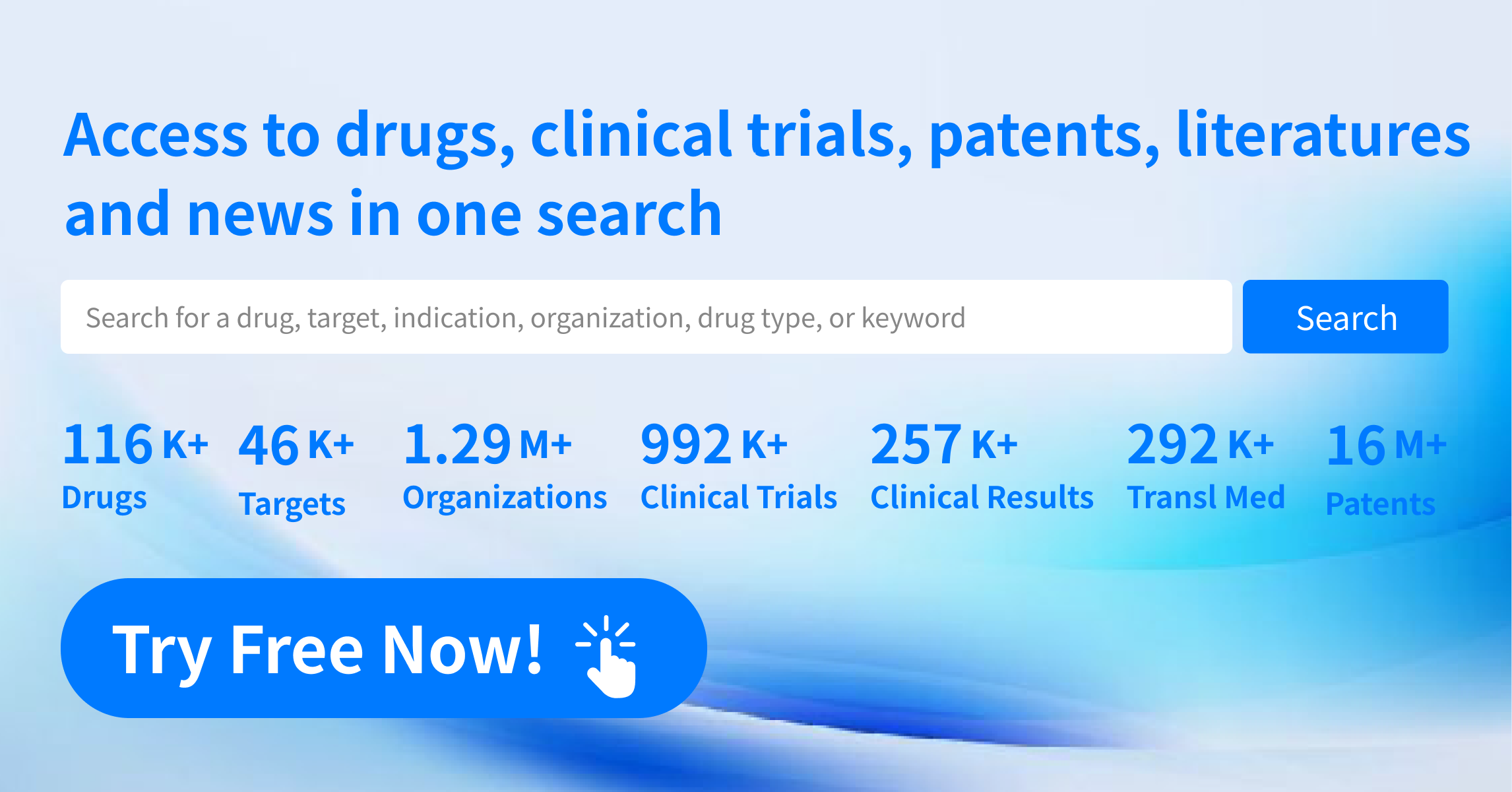Request Demo
What is Capecitabine used for?
14 June 2024
Capecitabine is an oral chemotherapeutic agent widely recognized for its efficacy in treating various forms of cancer. Marketed under the trade name Xeloda, it is a fluoropyrimidine carbamate, which means it is a prodrug that is enzymatically converted into 5-fluorouracil (5-FU) in the body. Capecitabine primarily targets rapidly dividing cancer cells, making it effective against colorectal and breast cancers, particularly in metastatic settings. The drug has been a focus of extensive research and has received approval from several worldwide regulatory bodies, including the FDA. Research institutions and pharmaceutical companies continue to explore its use in combination therapies and for additional indications, looking to expand its utility and improve patient outcomes.
Capecitabine's mechanism of action is intriguing and highly targeted. Once ingested, Capecitabine undergoes a series of enzymatic conversions: first in the liver to 5'-deoxy-5-fluorocytidine (DFCR), then into 5'-deoxy-5-fluorouridine (DFUR), and finally into 5-fluorouracil (5-FU) at the tumor site. This selective activation relies on the higher levels of thymidine phosphorylase found in tumor tissues compared to normal tissues. 5-FU then disrupts tumor DNA synthesis by interfering with the enzyme thymidylate synthase, which is crucial for DNA replication. By inhibiting this enzyme, 5-FU effectively hampers the proliferation of cancerous cells, leading to their death. This targeted approach minimizes the effects on normal, healthy cells, although some collateral damage and associated side effects do occur.
Administering Capecitabine is relatively straightforward but requires careful adherence to prescribed guidelines to maximize efficacy while minimizing adverse effects. The drug is typically taken orally in tablet form, usually twice a day, within 30 minutes after a meal. The dosage and treatment cycle can vary based on the type of cancer being treated, the patient's body surface area, and their overall health condition. Commonly, Capecitabine is administered in cycles that involve taking the drug for two weeks followed by a one-week rest period. The onset time for Capecitabine to exhibit its therapeutic effects may vary among patients, but significant tumor response is generally observed within a few weeks to a few months of initiating therapy. Regular monitoring through blood tests and imaging studies is essential to evaluate the drug's effectiveness and to make necessary dosage adjustments.
Capecitabine, like other chemotherapeutic agents, comes with a profile of side effects that can range from mild to severe. Common side effects include gastrointestinal disturbances such as nausea, vomiting, diarrhea, and abdominal pain. Hand-foot syndrome, characterized by redness, swelling, and pain on the palms of the hands and soles of the feet, is another frequent adverse effect. Fatigue, weakness, and myelosuppression (reduction in bone marrow activity leading to decreased blood cell counts) are also commonly reported. Severe side effects may include cardiotoxicity, particularly in patients with pre-existing heart conditions, and hepatotoxicity. Patients must be vigilant for signs of severe reactions such as chest pain, jaundice, or severe skin reactions and seek medical attention promptly if they occur. Contraindications for Capecitabine use include known hypersensitivity to Capecitabine or any of its components, and severe renal impairment. Furthermore, its use is contraindicated in patients with dihydropyrimidine dehydrogenase (DPD) deficiency, a condition that hampers the metabolism of 5-FU, leading to severe toxicity.
The efficacy and safety of Capecitabine can be influenced by interactions with other drugs. Several medications can alter the metabolism and effectiveness of Capecitabine, necessitating cautious management of drug regimens. For instance, anticoagulants like warfarin can interact with Capecitabine, increasing the risk of bleeding. Close monitoring of INR (International Normalized Ratio) levels is essential for patients on concomitant anticoagulant therapy. Moreover, certain antiviral drugs, such as sorivudine, and antiepileptics like phenytoin, can potentiate Capecitabine's toxicity by inhibiting its metabolic pathway. Concomitant use of allopurinol, commonly prescribed for gout, can reduce the effectiveness of Capecitabine by interfering with its conversion to 5-FU. Patients should also avoid folic acid supplements and leucovorin, as these can enhance the cytotoxic effects of Capecitabine, leading to increased side effects. Healthcare providers must carefully review all medications and supplements a patient is taking to mitigate potential interactions and ensure safe administration of Capecitabine.
In summary, Capecitabine is a potent chemotherapeutic agent with a well-defined mechanism of action and a significant role in managing colorectal and breast cancers. Its oral administration route offers convenience, although adherence to guidelines and monitoring is crucial to ensure therapeutic efficacy and safety. Understanding the potential side effects and managing drug interactions effectively can help optimize treatment outcomes and enhance the quality of life for cancer patients undergoing Capecitabine therapy. As research continues, the hope is to further refine its use, reduce adverse effects, and expand its applicability to other cancer types.
Capecitabine's mechanism of action is intriguing and highly targeted. Once ingested, Capecitabine undergoes a series of enzymatic conversions: first in the liver to 5'-deoxy-5-fluorocytidine (DFCR), then into 5'-deoxy-5-fluorouridine (DFUR), and finally into 5-fluorouracil (5-FU) at the tumor site. This selective activation relies on the higher levels of thymidine phosphorylase found in tumor tissues compared to normal tissues. 5-FU then disrupts tumor DNA synthesis by interfering with the enzyme thymidylate synthase, which is crucial for DNA replication. By inhibiting this enzyme, 5-FU effectively hampers the proliferation of cancerous cells, leading to their death. This targeted approach minimizes the effects on normal, healthy cells, although some collateral damage and associated side effects do occur.
Administering Capecitabine is relatively straightforward but requires careful adherence to prescribed guidelines to maximize efficacy while minimizing adverse effects. The drug is typically taken orally in tablet form, usually twice a day, within 30 minutes after a meal. The dosage and treatment cycle can vary based on the type of cancer being treated, the patient's body surface area, and their overall health condition. Commonly, Capecitabine is administered in cycles that involve taking the drug for two weeks followed by a one-week rest period. The onset time for Capecitabine to exhibit its therapeutic effects may vary among patients, but significant tumor response is generally observed within a few weeks to a few months of initiating therapy. Regular monitoring through blood tests and imaging studies is essential to evaluate the drug's effectiveness and to make necessary dosage adjustments.
Capecitabine, like other chemotherapeutic agents, comes with a profile of side effects that can range from mild to severe. Common side effects include gastrointestinal disturbances such as nausea, vomiting, diarrhea, and abdominal pain. Hand-foot syndrome, characterized by redness, swelling, and pain on the palms of the hands and soles of the feet, is another frequent adverse effect. Fatigue, weakness, and myelosuppression (reduction in bone marrow activity leading to decreased blood cell counts) are also commonly reported. Severe side effects may include cardiotoxicity, particularly in patients with pre-existing heart conditions, and hepatotoxicity. Patients must be vigilant for signs of severe reactions such as chest pain, jaundice, or severe skin reactions and seek medical attention promptly if they occur. Contraindications for Capecitabine use include known hypersensitivity to Capecitabine or any of its components, and severe renal impairment. Furthermore, its use is contraindicated in patients with dihydropyrimidine dehydrogenase (DPD) deficiency, a condition that hampers the metabolism of 5-FU, leading to severe toxicity.
The efficacy and safety of Capecitabine can be influenced by interactions with other drugs. Several medications can alter the metabolism and effectiveness of Capecitabine, necessitating cautious management of drug regimens. For instance, anticoagulants like warfarin can interact with Capecitabine, increasing the risk of bleeding. Close monitoring of INR (International Normalized Ratio) levels is essential for patients on concomitant anticoagulant therapy. Moreover, certain antiviral drugs, such as sorivudine, and antiepileptics like phenytoin, can potentiate Capecitabine's toxicity by inhibiting its metabolic pathway. Concomitant use of allopurinol, commonly prescribed for gout, can reduce the effectiveness of Capecitabine by interfering with its conversion to 5-FU. Patients should also avoid folic acid supplements and leucovorin, as these can enhance the cytotoxic effects of Capecitabine, leading to increased side effects. Healthcare providers must carefully review all medications and supplements a patient is taking to mitigate potential interactions and ensure safe administration of Capecitabine.
In summary, Capecitabine is a potent chemotherapeutic agent with a well-defined mechanism of action and a significant role in managing colorectal and breast cancers. Its oral administration route offers convenience, although adherence to guidelines and monitoring is crucial to ensure therapeutic efficacy and safety. Understanding the potential side effects and managing drug interactions effectively can help optimize treatment outcomes and enhance the quality of life for cancer patients undergoing Capecitabine therapy. As research continues, the hope is to further refine its use, reduce adverse effects, and expand its applicability to other cancer types.
How to obtain the latest development progress of all drugs?
In the Synapse database, you can stay updated on the latest research and development advances of all drugs. This service is accessible anytime and anywhere, with updates available daily or weekly. Use the "Set Alert" function to stay informed. Click on the image below to embark on a brand new journey of drug discovery!
AI Agents Built for Biopharma Breakthroughs
Accelerate discovery. Empower decisions. Transform outcomes.
Get started for free today!
Accelerate Strategic R&D decision making with Synapse, PatSnap’s AI-powered Connected Innovation Intelligence Platform Built for Life Sciences Professionals.
Start your data trial now!
Synapse data is also accessible to external entities via APIs or data packages. Empower better decisions with the latest in pharmaceutical intelligence.


